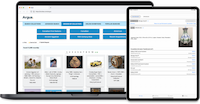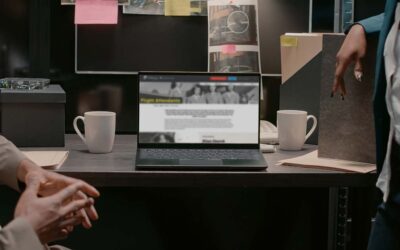Reimagining “Impossible” Museum Exhibitions as Story Inspiration

Rachael Cristine Woody
Storytelling with collections online offers a variety of approaches to storytelling through exhibits. In a previous post, Storytelling Inspiration with Collections Online, we explored the inspiration and benefits that come from building both hybrid and online-only exhibits. We also reviewed how exhibitions of the past, present, and future can offer a variety of story inspiration.
Hybrid exhibits (combined in-person and online offerings) can deliver an enhanced experience, but in addition, the ability to produce online-only exhibits makes it possible to execute storytelling that would have previously been impossible in a physical setting.
Storytelling with collections online offers great flexibility because physical space limits and object conditions do not factor into an online-only story. In this regard, the lack of physical constraints can inspire us to share stories that otherwise would have been impossible to relate in a physical exhibition.
The (Nearly) Impossible Exhibition
We can do so much more online than we can do in a physical space. And yes, there are some things that just work better when they’re tangible and in-person. (Our excitement about exploring the vast online canvas does not negate the importance of an in-person experience.)
The tools for use in an online setting continue to increase in number and become easier to use with every iteration. Suddenly, storytelling elements that may have been difficult, too expensive, or unsafe to produce are now possible in an online setting.
Navigating Challenges to a Physical Exhibit
The most common physical challenges present when thinking of exhibition design within a museum are:
- Space Restrictions: Physical space limits the size of objects that can fit within the gallery and it can limit the number of objects used.
- Object Size: Objects can be both too large and too small to display effectively or safely within a gallery.
- Object Health: Objects are inherently fragile and the integrity of the structure, past damage, and other poor condition contributors can make it ill-advised to show the object in a public gallery space.
- Peer Objects and Sites: Peer objects or the sites they’re located in are difficult to travel to and impossible to display within the context of each other.
Bringing the Impossible to Life with Technology
For one or more of these reasons, it can be impossible to consider certain exhibitions. And yet, the stories of these exhibits are compelling and should be shared. While it may not be possible in a physical space, it’s more than likely that an online version could be produced.
Technology tools such as the internet, 3d imaging, and virtual reality construction make it entirely possible to successfully navigate all four of the previously listed challenges. The impossibility of the physical exhibit is its own inspiration to take shape online.
The Enhanced Exhibition Experience
For exhibitions that are mostly possible, it’s also an option to execute the physical version and then supply either an online version, or online supplements—as described in our earlier posts for this series. The online venue can be used to enhance and complement the physical exhibition.
As a refresher, the most typical collection online items to supplement physical exhibits are:
- A QR code or link to read more about the item from your museum collections management system (CMS).
- A QR code or link to view online galleries of related materials delivered by the CMS.
- Audio-visual supplements that demonstrate how a particular item was created or used.
- Delivering additional information (as text or audio-visual) that offers different perspectives related to the item or topic of the exhibit.
Reimagining the Impossible
Telling a story previously thought impossible to tell is a tantalizing prospect. Similarly so when considering we can share objects otherwise too fragile to share, and within the situational context of its origin either at a great distance or from a time long past. Previously “impossible” stories can now be reimagined for inspired application to the online canvas.

Rachael Cristine Woody
Curious about this topic? Please join us for the companion webinar, Finding Story Inspiration with Collections Online, December 18 at 11 a.m. Pacific, 2 p.m. Eastern. (Can’t make it? Register anyway and we will send you a link to the recording afterwards). Register now or call 604-278-6717 to save your spot.
**Disclaimer: Any in-line promotional text does not imply Lucidea product endorsement by the author of this post.
Never miss another post. Subscribe today!
Similar Posts
An Introduction to Scrollytelling for Museums
Discover how museums use scrollytelling and digital storytelling platforms to create immersive narratives. This introduction explores key concepts and approaches to interactive storytelling.
Exploring Self-Determinate Multiple Pathways: An Example of Digital Storytelling
Discover how self-determinate multiple pathways offer flexible interactive storytelling in museum exhibits. Learn from the Tenement Museum’s ‘Your Story Our Story.’
Digital Museum Storytelling Example: A Look at Self-Determinate Linear Pathways
Self-determinate characteristics on a linear pathway go beyond brief sidebar topics and instead offer alternative ways to navigate the linear pathway.
Digital Storytelling in Museums: The Prescriptive Linear Pathway in Action
Rachael Woody emphasizes that storytelling is key to engaging audiences with collections. One effective approach? The prescriptive linear pathway—a simple yet powerful method for guiding visitors through digital exhibits.







Leave a Comment
Comments are reviewed and must adhere to our comments policy.
0 Comments